

It would be ideal to work from home all the time, many of us thought, until we had to do it. For me, like many, it almost worked well. The space I had for my home office was almost big enough. But the desk was too shallow, and so my monitor was always just a little too close. My “co-workers” — my cats, wife, and children — were great companions. But they were a bit rowdier than expected. I was so close to having a perfect work from home setup, but still so far away. Le Sigh.
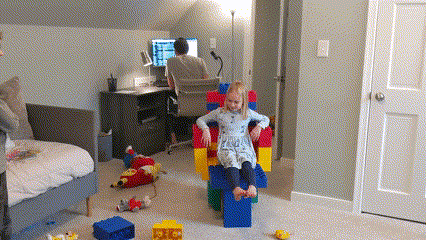
Having experienced this, I yearned for the final 20% improvement that would take this from a near miss, to bliss. As I talked about my aspirations with friends and colleagues, I realized I was not the only one with work from home office issues. People were working from cramped nooks, attics, kitchen tables, and even closets!
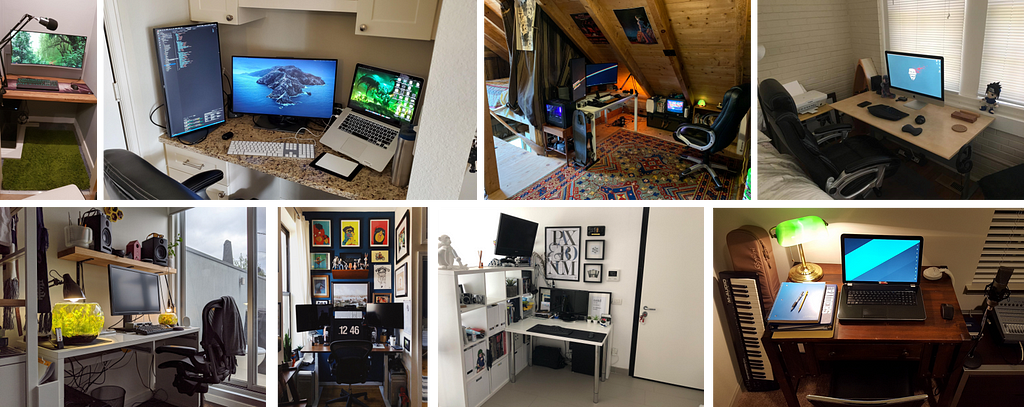
Yet, as I heard people’s stories, many of the same, familiar problems emerged… bad lighting, lack of privacy, lack of space… and I began to wonder if VR could help. Consider the envisioned setup below.
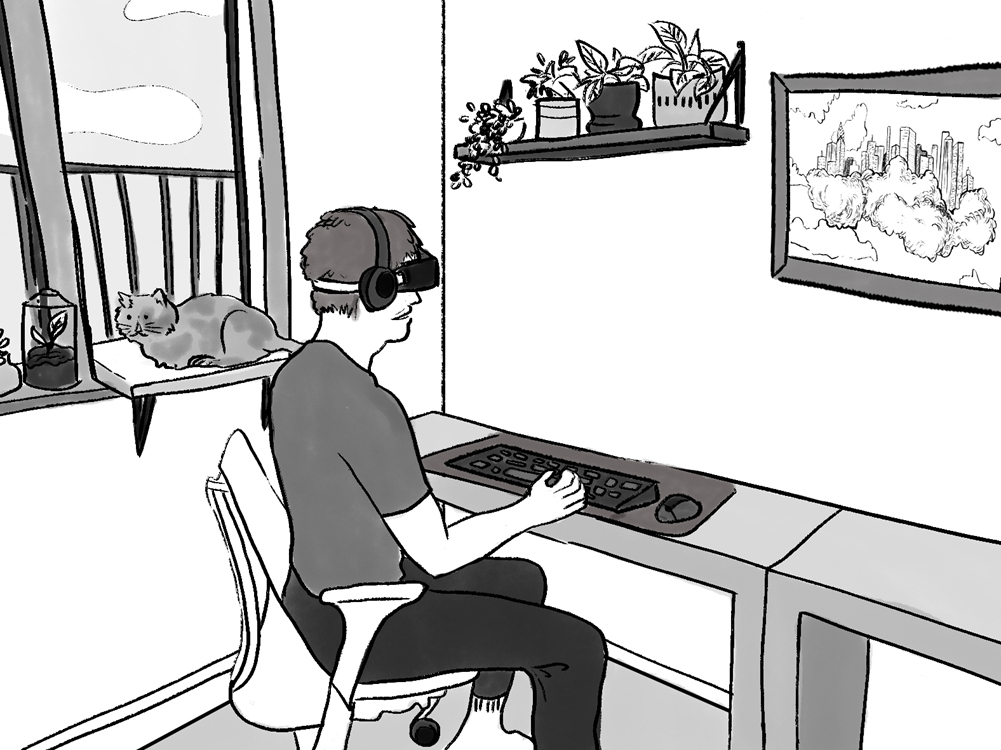
Even though the desk is too shallow for a physical monitor, this user works in relative comfort using virtual monitors, all while blocking out distractions like his noisy roommates. Could VR be the WFH silver bullet?
To investigate this idea, we reviewed 430 self-published images of software developer home workspaces, identifying the challenges that developers encountered “in the wild” when setting up their home offices. We then used speculative design (like the drawing above) to imagine if VR could solve these issues.
Together, they showed that VR has the potential to address many common problems with at-home workstations and that, with continued improvements, the hardware may soon be an integral part of many at-home developer workspaces.
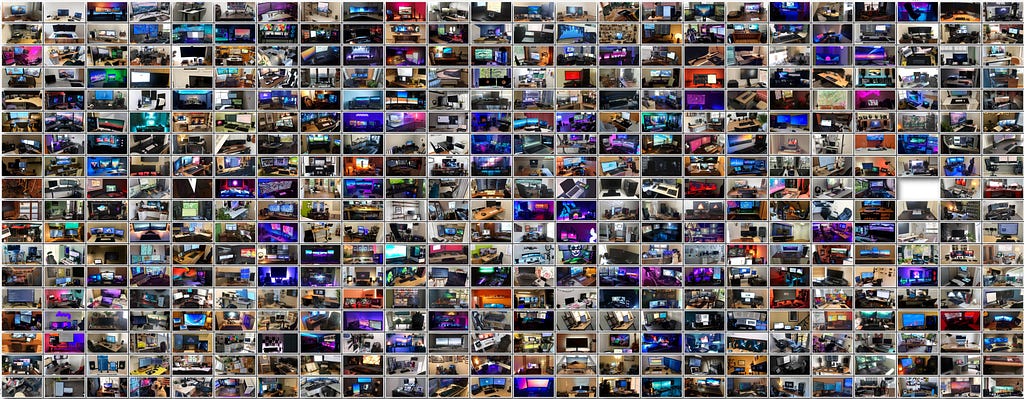
So, I freely admit, we became a little obsessed with this idea. I find myself now recalling that we studied, in glorious detail, 430 images from places like Reddit/Battlestations. In our zeal, we coded these workstations up in all kinds of ways. For instance, if you want to peruse cropped pictures of all the desk lamps we found, well, there’s a folder full of them. Want to see a collage of the mice that we found? No problem. Are you into water bottles? heck out this collection. You can even browse the 430 original files on GitHub and find the link to their original reddit post. But I digress…
The main reason we studied these images was to determine the challenges that developers face when creating a space to work from at home.
It turns out that these issues are relatively easy to spot, even from a still photo. Below we show an example from all of the most common categories of issues, such as (A) a lack of desk space and (B) a backlit monitor.

While it may be difficult to pick out the issues from these smaller photos, in their original sizes the issues become obvious. For instance, take the (near) original size photo below. Is it not obvious that this developer would benefit from more space both beside his chair and on his desk? When I view this photo, I can almost feel my left elbow ramming into the iron bar of the shelf as I begin to type.
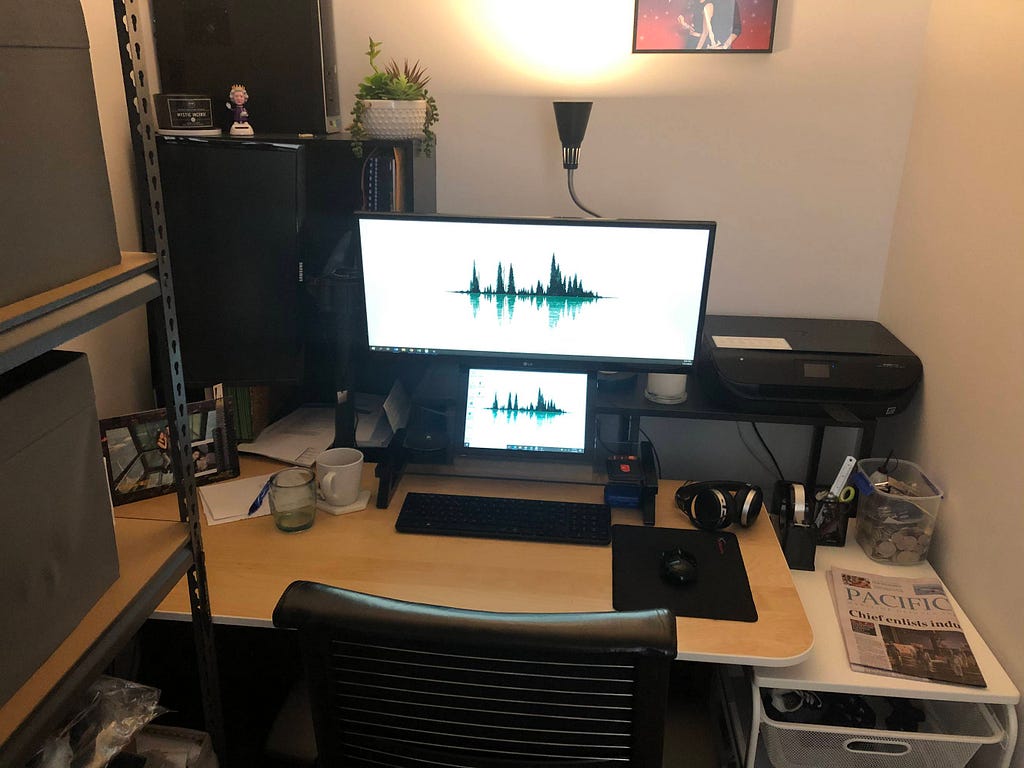
And lack of space isn’t the only problem that developers encounter. Sometimes, because they have a limited choice of where they can place their workstation, they end up with challenging lighting situations. In the desk below the monitor is so backlit it appears to be descending from heaven; I’m not sure that dark mode is going to help with eye strain there!
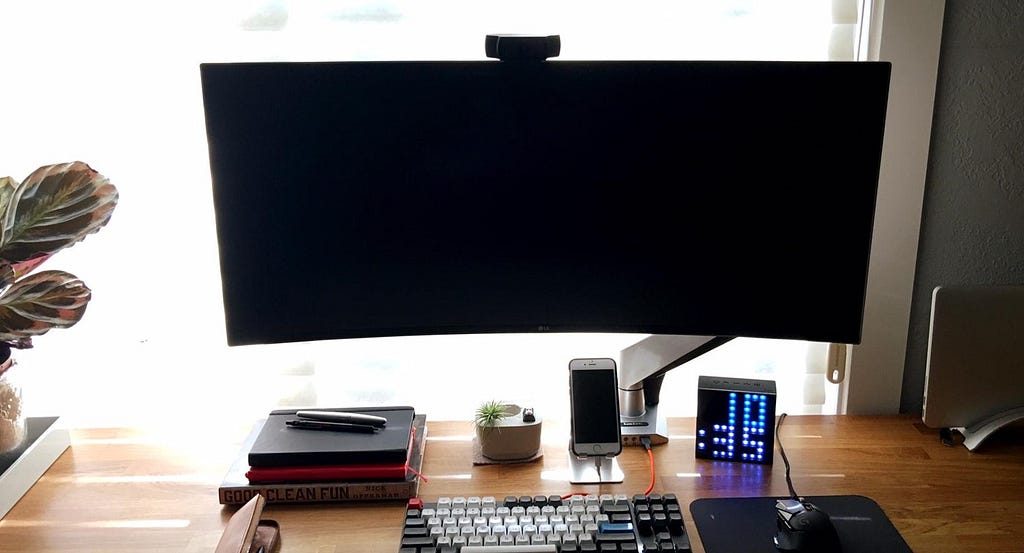
By the time we had categorized and counted all the problems, we had a much better understanding of what goes wrong in WFH setups. For instance, we found that 84% (359/430) of the workspace pictures showed an obvious problem that we could identify. In the table below, we show the breakdown of problems into workspaces. As you can see, lack of desk space and lighting issues are some of the most prevalent problems.
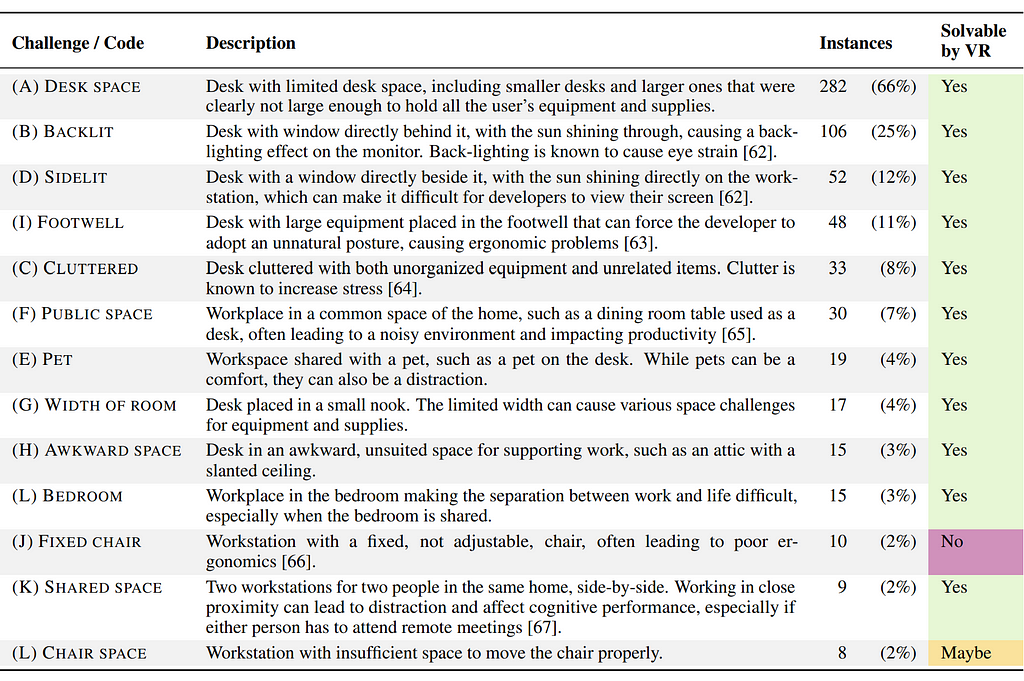
One of the things that we kept our eye on while we were cataloguing these issues was whether VR could be used to overcome each issue. Our process for this was to take a given WFH image, identify the issues, and then ask an artist to render the same workspace but with a VR output system instead of normal monitors and speakers. Then, we analyzed the rendering to see if the original issues still existed. As you can see in the above table, many issues simply go away when using VR.

In some cases, like the workspace above, the semi-public nature of the room likely led to many distractions. Imagine trying to focus when someone is blending a smoothie nearby! However, if the user dons a VR headset and a good pair of noise-cancelling headphones, one can imagine them working comfortably through all but the loudest kitchen appliance noise.
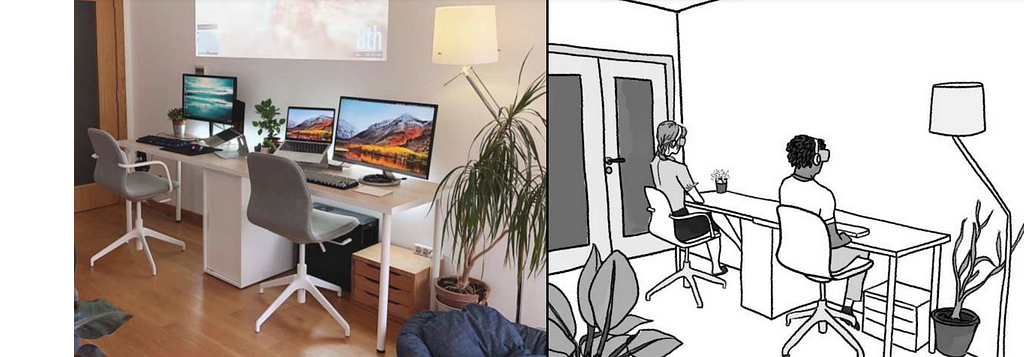
In other cases, it wasn’t that the space was semi-public, but that it was shared, such as a shared bedroom office. In these cases, whenever both parties were working at the same time there was potential from distraction. Whether it be the clacking of a mechanical keyboard, the watching of a training video, or the visual distraction of a video gaming session, having two desks beside each other can be problematic. Using VR, each worker can transport themselves to a private office, on the beach if they prefer.
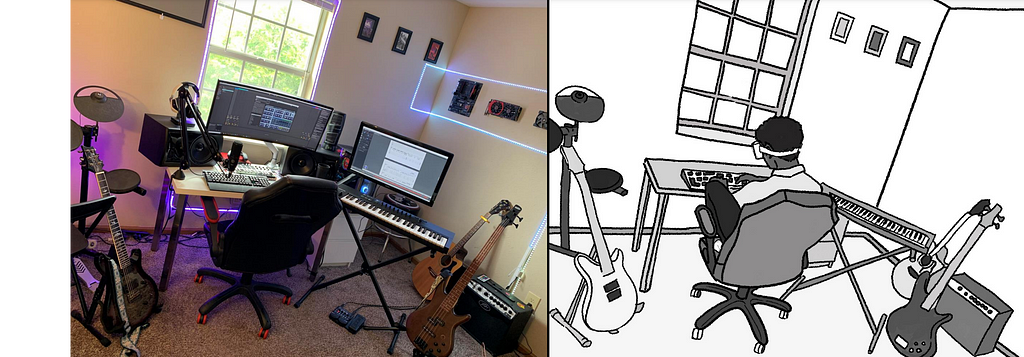
In many cases, developers had to place desks either beside or directly in front of a sunny window. This causes a backlighting effect, straining users eyes as they try to view the relatively dim computer monitor. When using VR lighting issues are non-existent, as the user has complete control over the virtual environment.

In the picture above, we sketch a potential full solution. Imagine a developer working at home, even from a smaller space, but looking around and viewing a beautiful valley. The screen, keyboard, and coffee cup are shown in VR, keeping them working productively, but the rest of it is a noisy, distraction-filled environment that might as well be miles away.
Can you imagine a home office like this?
Resources
- 📜Want to read the academic paper behind this work: https://github.com/vcuse/workstation-setups.pdf
- 🖼️Want to download the original images: https://github.com/vcuse/workstation-setups
- 📷Want to browse the original images online: https://devworkstations.weebly.com/
- 🐭Want to see crops of only mice, or speakers: https://github.com/vcuse/workstation-setups/tree/master/data/pictures/cropped-items
Ready Worker One: Is VR the missing piece in your work-from-home setup? was originally published in Better Programming on Medium, where people are continuing the conversation by highlighting and responding to this story.